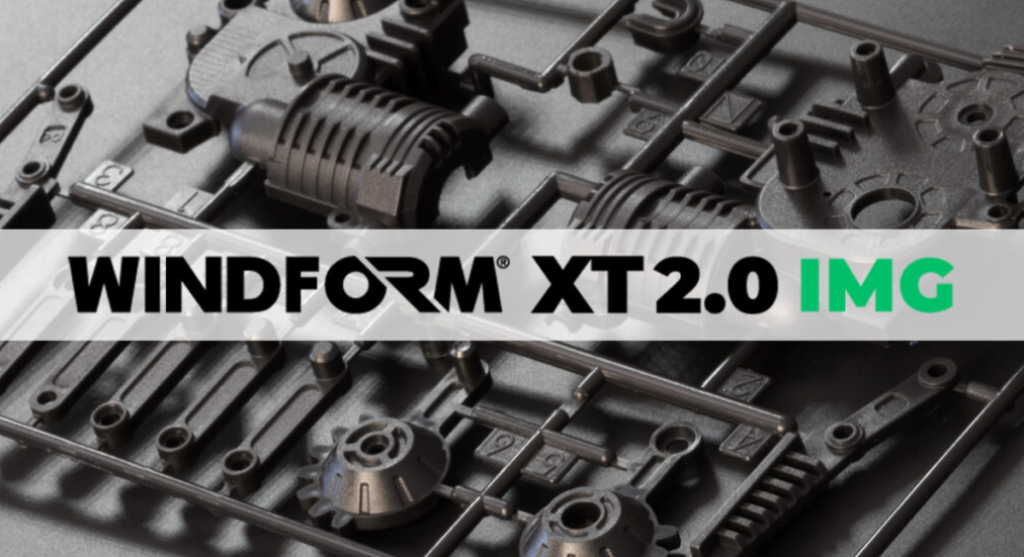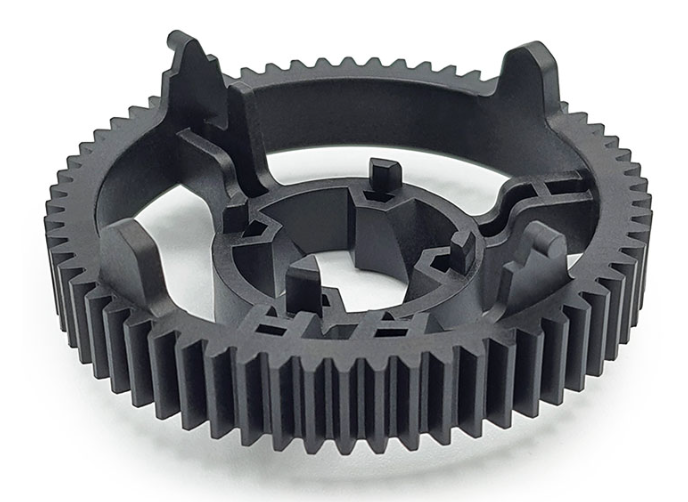3D printing materials and services provider CRP Technology has launched new material, dubbed Windform XT 2.0 IMG (Injection Molding Grade).
Derived entirely from the “esteemed TOP-LINE range” for 3D printing, this high-performance material showcases a composite structure with a thermoplastic matrix, PA12 base, and enhanced reinforcement from carbon fibers. A notable feature of this material is 100% recycled with no addition of virgin powder from exhausted Windform XT 2.0 for Laser Sintering.
“For some time we at CRP Technology have been studying an alternative and total use of those exhausted Windform powders for selective laser sintering (SLS) that have fallen into disuse as they no longer meet our high quality standards,” said Franco Cevolini, engineer, CEO and technical director of CRP Technology.

A 3D printing material for injection molding with superior performance
According to the company, the Windform XT 2.0 IMG formulation offers superior performance characteristics, including high-level stiffness, shock resistance, and precise detailing, even in thin layers. Furthermore, the high-grade injection molded components made from this material retain several key attributes found in prototypes produced using Windform XT 2.0 additive manufacturing. This novel material is suitable for challenging applications found in sectors such as automotive, transportation, e-mobility, agriculture, robotics, and industrial design.
CRP Technology says its approach involves the complete reutilization of “depleted” Windform powders without including any fresh materials, guaranteeing a 100% reuse and appropriate conversion for application in both conventional and additive manufacturing methods. Cevolini, explains that the company achieved this by regranulating the Windform XT 2.0 powder residue, thereby enabling its compatibility with injection molding technology. After a successful testing phase, CRP Technology is now prepared to offer this recycled material to large-scale manufacturers.

Transforming additive manufacturing with injection molding
Wilson Sporting Goods, a US-based sporting equipment manufacturer, utilized 3D printing technology provided by high-speed resin 3D printer manufacturer Nexa3D. The NXE400 3D printers from Nexa3D were employed in conjunction with Addifab‘s freeform injection molding (FIM) technology and xMOLD soluble resin to create prototypes of injection mold tooling for Wilson’s youth baseball bat grips. In March of this year, Nexa3D acquired Addifab, thus strengthening its collaboration with Wilson. Consequently, this alliance has offered Wilson increased design freedom, substantial time savings, and high flexibility. By incorporating Nexa’s 3D printing technology into its prototyping workflow, Wilson has successfully streamlined its R&D process.
Nicolet Plastics and Westec Plastics, two companies specializing in injection molding for the medical device market, employed Mantle technology to enhance efficiency and reduce labor in the production of precise injection mold tooling parts. Nicolet Plastics utilized Mantle’s 3D printer to manufacture production tooling for a customer named Gamber-Johnson. This implementation of Mantle technology significantly decreased the time required by toolmakers from 180 hours to 12.5 hours, while also reducing the timeline for creating initial samples of molded components from six weeks to two weeks. This was achieved by 3D printing three inserts. The inserts manufactured by Mantle were nearly 95% complete, necessitating minimal finishing touches before commencing the molding process.
Additionally, Westec Plastics utilized Mantle’s metal 3D printing technology to enhance its tooling capabilities without relying on scarce toolmakers. This adoption enabled Westec to quickly produce H13 inserts that were 75-95% complete, freeing up its toolmakers’ time to focus on essential tasks like tool maintenance and repair.
What does the future of 3D printing for the next ten years hold?
What engineering challenges will need to be tackled in the additive manufacturing sector in the coming decade?
To stay up to date with the latest 3D printing news, don’t forget to subscribe to the 3D Printing Industry newsletter or follow us on Twitter, or like our page on Facebook.
While you’re here, why not subscribe to our Youtube channel? Featuring discussion, debriefs, video shorts, and webinar replays.
Are you looking for a job in the additive manufacturing industry? Visit 3D Printing Jobs for a selection of roles in the industry.
Featured image shows Windform XT 2.0 IMG is suitable for automotive, transportation, e-mobility, and more. Image via CRP Technology.



